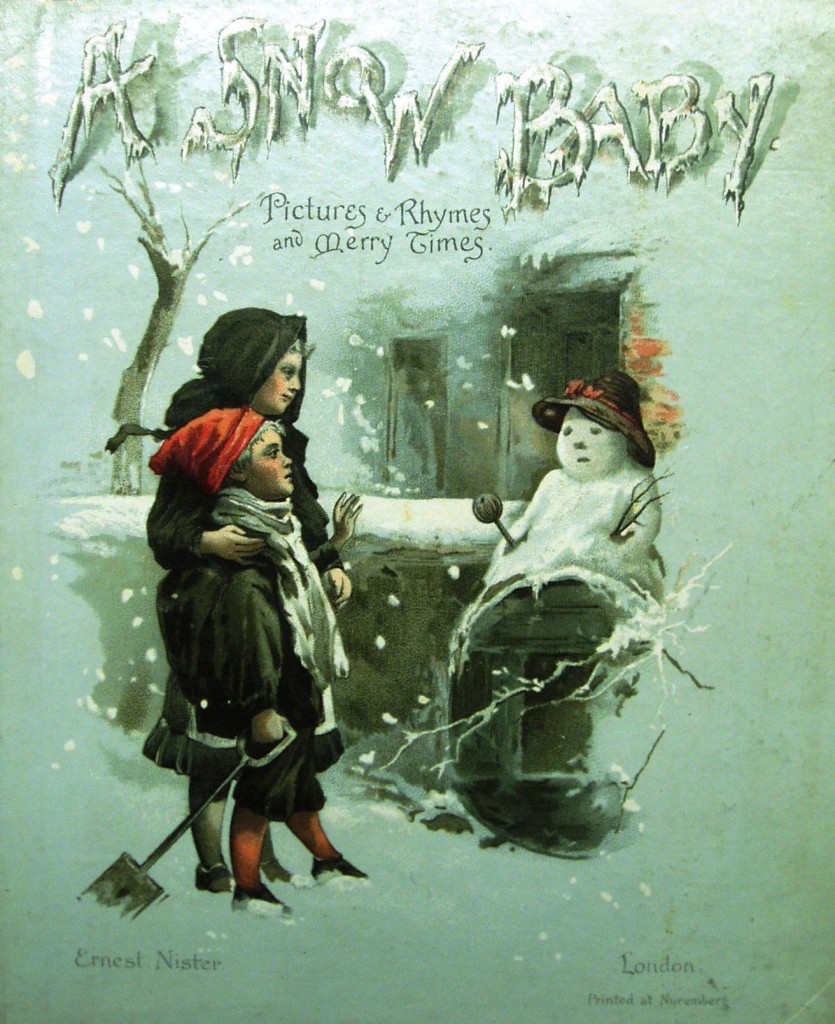This illustration from A Snow Baby: merry rhymes for pleasant times by G. Clifton Bingham (published by Ernest Nister, 1889) is of a small snow figure made out of actual snow, but snow babies, as solid figurines that wouldn’t melt, evolved out of early 19th century German cake decorations made from flour, sugar and gum, called tannenbaumkanfekt, used to decorate cakes and Christmas trees. The most popular were zuckerpuppes, or sugar dolls, which people used to create snow scenes underneath their Christmas trees, along with figurines of polar bears and igloos. Later on confectioners introduced versions made of marzipan.
The oldest snow babies were made in Germany in the 1890s out of bisque porcelain, white unglazed porcelain with a matte, textured finish. The little figurines sported all-in-one snowsuits with a roughened texture made to resemble snowflakes, and painted faces. They were popular with mothers of the time because they were reusable cake decorations, but were probably less favoured by children than the sugar variety!
The appearance of these bisque snow baby dolls in the 1890s coincided with a story that captured the public imagination – that of the baby girl born in Greenland in 1893 while her father, Admiral Robert Peary, was on an expedition to the Arctic. She was the first non-indigenous baby to be born that far north, and was called a snow baby by the local indigenous Inuit. There is a book about this by Katherine Kirkpatrick called The Snow Baby: The Arctic Childhood of Robert E. Peary’s Daring Daughter.
#victorianchildrensbooks #victorianchristmas #adventcalendar #victorianpicturebooks #advent #childrenspicturebooks #victorianillustration #victorianillustrators #snowbabies
